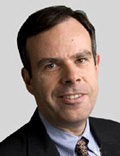Renewable Solar Energy: Has the Sun Finally Risen on Photovoltaics?
Category
Published on
Abstract
The confluence of oil price spikes, heightened concerns about the environment and now the likelihood of new government driven economic stimuli has increased the discussion about renewable energy policy and investments around the globe. Increased global electricity demand continues to be driven by more electronics, the rise of emerging economies and soon, the electrification of transportation thereby putting even more emphasis on abundant and clean methods of generation. So called "solar panels" have been long proposed as a significant component of such a solution, dating back to the discovery of the photovoltaic (PV) effect in 1839, to the first silicon solar cell in 1954 and the first oil price spikes in the 1970s. But even with all the compelling factors, PV currently generates less than 0.1% of the world's electricity. After a review of the overall renewable energy landscape, including the central role of economics, we present here the case that PV is on the verge of becoming a major source of electrical power through a principle similar to that which underlies the 50 year progress of IC technology - the reduction of unit cost through nanomanufacturing.
Purdue News Service.
Bio
 Dr. Mark R. Pinto is a Sennior Vice President at Applied Materials, serving both as General Manager of the Enrgy and Environmental Solutions business and as the corporate Chief Technology Officer. As part of his role in developing new businesses for Applied Materials, Dr. Pinto lead the formation of Energy and Environmental Solutions to extend the company’s nanomanufacturing technologies into new markets, including its rapidly growing solar business. Dr. Pinto received bachelors degrees from Rensselear Polytechnic Institute and a masters degree and Ph.D. in electrical engineering from Stanford University. He is a former Bell Labs Fellow, a Fellow of the IEEE, and the recipient of the 2008 J. J. Ebers Award from the IEEE Electron Devices Society for his contributions to semiconductor technology.
Dr. Mark R. Pinto is a Sennior Vice President at Applied Materials, serving both as General Manager of the Enrgy and Environmental Solutions business and as the corporate Chief Technology Officer. As part of his role in developing new businesses for Applied Materials, Dr. Pinto lead the formation of Energy and Environmental Solutions to extend the company’s nanomanufacturing technologies into new markets, including its rapidly growing solar business. Dr. Pinto received bachelors degrees from Rensselear Polytechnic Institute and a masters degree and Ph.D. in electrical engineering from Stanford University. He is a former Bell Labs Fellow, a Fellow of the IEEE, and the recipient of the 2008 J. J. Ebers Award from the IEEE Electron Devices Society for his contributions to semiconductor technology.
Sponsored by
Cite this work
Researchers should cite this work as follows:
Time
Location
Lawson 1142, Purdue University, West Lafayette, IN